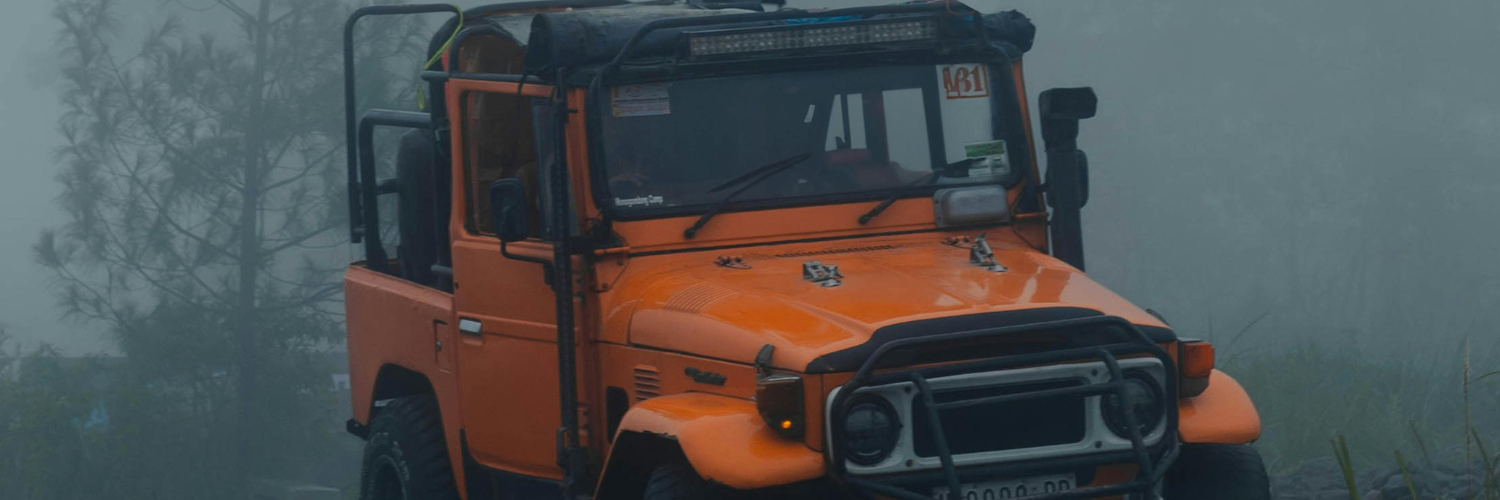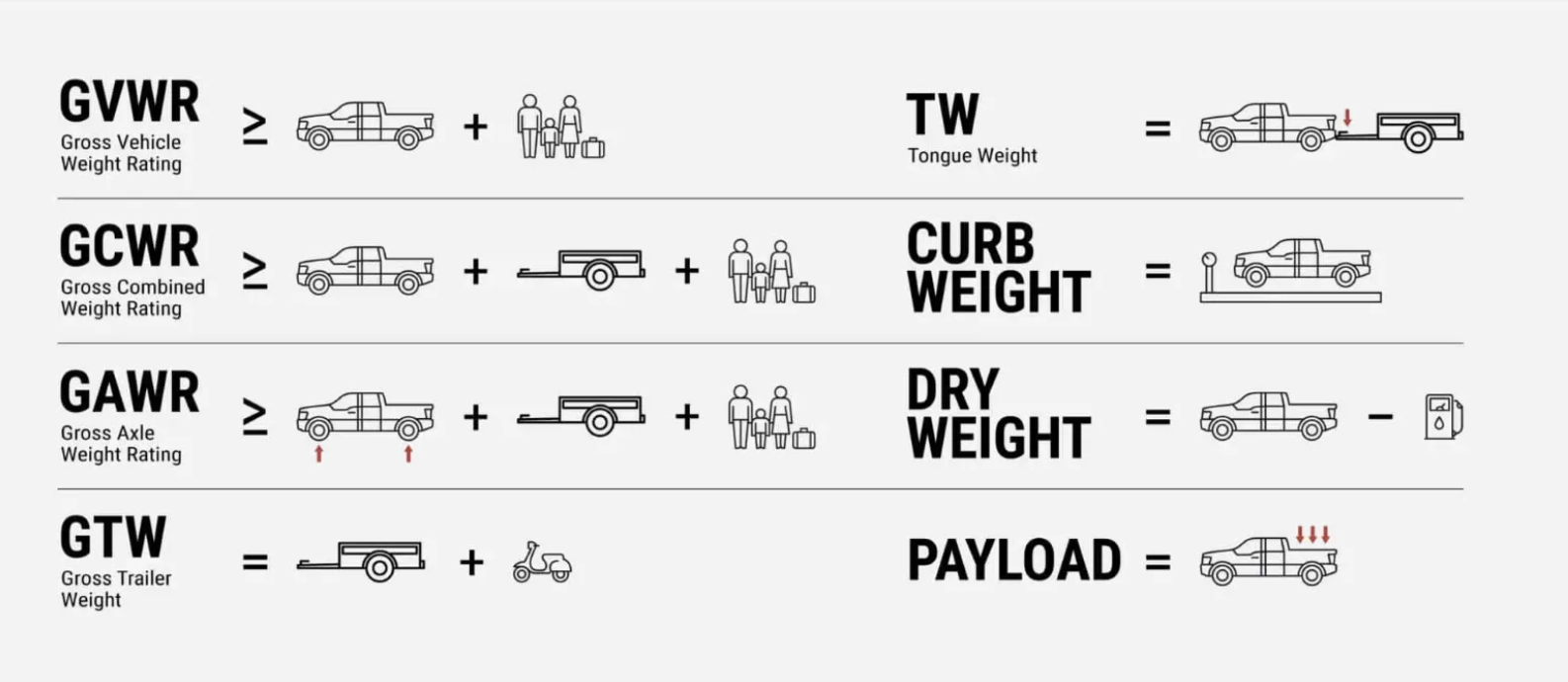Mobility Part 1: Is Your Vehicle Ready for Anything?
Learn the essentials of mobility preparedness—how to build, equip, and maintain your vehicle so it’s ready to keep you moving in any emergency.

Start with the Right Vehicle: Capability Matters
The foundation of mobility preparedness begins before you even turn the key. It starts with selecting a vehicle that can actually handle unexpected terrain.
Here's something important: you don't need a $80,000 overland rig to have genuine preparedness. Even a factory stock 4-wheel drive vehicle can handle what most emergencies will throw at you. A capable 4WD will get you past curbs, grass, gravel, small ditches—the real-world obstacles you'll actually encounter when roads are impassable and you need to navigate around obstacles.
Why does vehicle selection matter so much?
Because when most people think "emergency vehicle," they're imagining highway driving. In reality, emergencies force vehicles onto terrain they were never designed for. During those California wildfires, people in Priuses and sedans found themselves trying to cross curbs, navigate around downed trees, and break through fences. Many of those vehicles got stuck. Many owners abandoned them and fled on foot. Don't be that person.
A capable 4WD changes the equation entirely. It gives you options. It lets you navigate around obstacles instead of being blocked by them. It transforms you from vulnerable to capable.
When selecting your vehicle, prioritize these characteristics:
A 4WD drivetrain is non-negotiable. Trucks and SUVs are ideal because they offer ground clearance, payload capacity, and genuine off-road geometry. Personally, I prefer midsize options for their sweet spot between capability and fuel economy—they're agile enough to navigate tight spaces but rugged enough to handle serious terrain. Brands like Jeep and Toyota have consistently proven themselves in the field. I've spent time in Tacomas, Wranglers, and currently drive a Jeep Gladiator JT. These platforms have real-world credibility because they perform when it matters.
Here's a critical point for planning:
If you're thinking about keeping a secondary "emergency-only" vehicle somewhere else, stop. In a real emergency, you might not have time to retrieve it. Your daily driver must be the vehicle you're preparing. It must be ready right now, not eventually.
Know Your Vehicle Inside and Out: Information Is Power
Most people know their car's color and that it needs gas. That's not enough.
Real preparedness means understanding your vehicle at a mechanical level. You need to know what it can actually do, what its limits are, and how it will perform when pushed. This information isn't academic—it directly impacts your survival decisions.
Learn these details about your specific vehicle:
Your fuel tank capacity and realistic mileage per tank under normal conditions tell you your effective range. If you know you get 18 miles per gallon and your tank holds 20 gallons, you know you can reasonably travel around 320 miles on a full tank. Adjust that estimate downward for off-road driving, heavy loads, and high-stress situations where you might not drive as efficiently.
Your payload capacity and GVWR (Gross Vehicle Weight Rating) matter because an overloaded vehicle doesn't handle the same way. Overloading affects braking, acceleration, and stability, especially off-road. Understanding these limits prevents you from making dangerous decisions in a crisis.

The effect of a fully loaded setup on your vehicle's performance is something many people never test. A truck that performs great empty might drive completely differently when loaded to capacity. Test this. Understand how your vehicle handles. Drive it loaded. Learn its real-world behavior in actual conditions.
Knowing where your tow points are—front and rear—could literally mean the difference between getting unstuck and being permanently stranded. If you're stuck and need recovery, you need to know where to attach recovery equipment. If you need to help someone else, you need to know your vehicle's actual capability. This information could save a life.

Tires and Battery: The Most Likely Points of Failure
In real emergencies, two components fail before everything else: tires and batteries. They're also the two things that most people are least prepared for. Let's fix that.
Tire Essentials: Because Flats Happen
A flat tire in normal conditions is inconvenient. A flat tire in an emergency situation when you're trying to evacuate or reach safety? That's potentially catastrophic.
Carry the right tire equipment:
A full-size spare—not a donut, not a plug, an actual full-size spare. Donuts are emergency-only solutions that limit your speed and handling. In a crisis, you need real capability.
A quality tire plug repair kit and a reliable air compressor are your immediate response tools. When you get a puncture, you want to fix it quickly and get moving again. An ARB air compressor is a solid option because it's designed for vehicles and can handle repeated use. CO₂ tanks are another option—they're compact and deliver air fast, though you'll need to refill them at a welding shop afterward.
A Hi-Lift jack is genuinely one of the most useful tools you can carry. It's not just for changing tires. It doubles as a winch for recovery, a lever for unsticking yourself, and a multi-purpose mechanical tool. Quality matters here—get a real one.
Beyond equipment, understand tire maintenance:
Monitor your tread depth regularly. Rotate your tires according to manufacturer specs. Adjust tire pressure for off-road conditions—this is called "airing down," and it improves traction and comfort on rough terrain. But respect the process: air down too much and you risk losing the bead (the seal between tire and rim), which is a disaster you can't recover from in the field. Start conservatively and learn your vehicle's limits.
The CO₂ tank serves double duty—you can also use it with air tools and for quick tire fills during an emergency. Just remember you'll need to refill it afterward.
Battery Support: Never Be Stranded Again
A dead battery strands more people than almost any other mechanical failure. Traditional jumper cables are better than nothing, but they require another vehicle with a working battery nearby. In many emergency scenarios, that help might not be available. AmmoSquared recommends looking at Battle Born Batteries. The harness the power of lithium iron phosphate (LiFePO4), bringing the most efficient, stable, and powerful lithium-ion battery to the market.
This is why a lithium jump pack is genuinely transformative. Options like the NOCO are engineered specifically for this purpose. They're compact, they hold a charge for months, and they start vehicles reliably even in cold weather. Beyond jump-starting, modern lithium packs also charge phones, work as flashlights, and some include strobe functions for emergency signaling. One device, multiple critical functions.
Beyond emergency tools, practice vehicle maintenance discipline: replace your vehicle's battery every 2 years, especially if you live in extreme climates. Cold weather drains battery capacity faster. Heat degrades battery life. Don't wait for failure—plan for it.
Fire Safety: An Often-Overlooked Critical System
Fires in vehicles don't happen often, but when they do, they escalate fast. A small electrical fire can consume a vehicle in minutes. An accident could cause fuel to ignite. Having nothing means you watch your vehicle—and potentially your evacuation route—burn.
Mount a multipurpose fire extinguisher in your vehicle. It needs to be rated for classes A, B, and C fires (electrical, fuel, and other materials). It needs to be hard-mounted so it won't roll around or become a projectile in an accident. It needs to be easily accessible—mounted where you can grab it in seconds without fumbling. And it needs regular pressure checks to ensure it's actually functional when needed.
This isn't paranoia. This is the same fire safety mindset used by professional off-road racers, military personnel, and emergency responders. It's proven and practical.
A Solid Foundation Matters
Building mobility preparedness feels overwhelming at first. You're learning vehicle mechanics, carrying extra equipment, thinking about scenarios that hopefully never happen. That resistance is normal.
But here's what actually matters: your vehicle is either a resource or a liability when emergencies strike. There's no middle ground. A prepared vehicle transforms you from stranded to capable. It gives you options. It lets you help yourself and others. It might literally save your life.
Start with these essentials. Get the right vehicle if you can. Know its capabilities. Carry the right tools. Maintain it properly. Then move on to Part 2, where we'll talk about communication, navigation, and the survival supplies that extend your range even further.
Your future self—the one facing an actual emergency—will be grateful for the preparation you do today.


